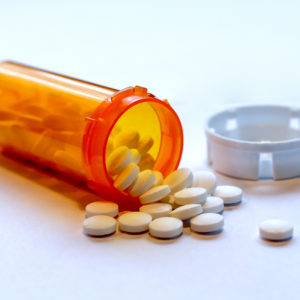Over the decades, Congress has created a number of programs intended to help the poor, the sick, the downtrodden. As a result, certain businesses and industries find ways to exploit these efforts and profit in ways lawmakers never foresaw or intended — and even hurt the very people the program was supposed to help.
That explains today’s rampant abuse of the 340B drug discount program.
Congress created it in 1992 to make sure low-income and uninsured people could access prescription medicine at more affordable prices. But three decades on, thanks to loopholes and a lack of transparency, thousands of hospitals, clinics, and pharmacies exploit 340B discounts without sharing their take with needy patients.
It’s time for Congress to get this well-intentioned program back on track, with strict limits on how health care providers can use 340B.
The program requires pharmaceutical companies that participate in the federal Medicaid program to provide discounts on outpatient medicine to safety-net hospitals and clinics that provide free or discounted care to poor and uninsured patients. Institutions in the system save 25 to 50 percent on drug purchases.
Ideally, these significant savings would be passed on to sick people — as Congress intended.
But the 340B policy has a built-in flaw: The threshold for hospitals to qualify for drug discounts is low. If they provide a minimum of charity care to just a small number of uninsured patients, they can buy drugs at the discounted price for all their patients, even the ones with insurance.
For example, suppose a doctor writes a patient a prescription following surgery at a 340B-covered hospital. The hospital may buy that drug at a discounted price of $750, but bill the patient for up to the full market price of $1,500. The hospital keeps the difference, profiting off either the patient or the insurer.
Once this incentive structure was in place, hospitals clamored to get in on the action. When the program launched in 1992, there were just 45 hospitals in the 340B system. Today, there are 2,580 — even though the percentage of people who are uninsured is much lower than it was 30 years ago.
Many of these hospitals are located in affluent areas, delivering very little care to society’s most disadvantaged patients. In fact, nearly two-thirds of 340B hospitals and clinics provide less charity care than the national average, according to the health care consulting firm Avalere.
And according to an analysis of 55 different 340B-covered entities reviewed by the Government Accountability Office, less than half provide full discounts to uninsured, low-income patients.
The problem has become worse in the last decade.
At the program’s outset, the government allowed the small number of 340B hospitals and clinics without in-house pharmacies to contract with for-profit pharmacies to dispense prescriptions. In 2010, though, new federal guidance allowed any 340B hospital to use an unlimited number of contract pharmacies, even if they already had one in-house. Hospitals typically share 340B profits with their pharmacy partners.
That rule change encouraged pharmacies to get in on the racket. The number of contract pharmacy arrangements in the 340B system grew from 2,321 in 2010 to 100,451 in 2020, an astonishing 4,200 percent increase, according to a study from the Berkeley Research Group. Today, more than 27,000 individual pharmacies participate in 340B.
Most contract drug stores belong to major chains. The GAO estimates that CVS, Walgreens, Walmart, Rite Aid, and Kroger make up 60 percent of all 340B pharmacies.
Sales volume of 340B drugs increased from $2.4 billion in 2005 to $29.9 billion in 2019. And Berkeley Research Group estimates 340B-covered providers and their contract pharmacies together made $13 billion from drug discounts.
In short, a program intended to help poor and uninsured patients has become a major revenue stream for for-profit health care providers and publicly traded companies.
The worst part is that low-income patients still struggle to afford life-saving medicine.
Congress can fix the problem by changing the current incentive structure, which just lures more and more businesses to try to profit off of 340B, and demanding transparency from providers. Then, perhaps, the program can return to financially benefiting vulnerable patients rather than the medical-industrial complex.

